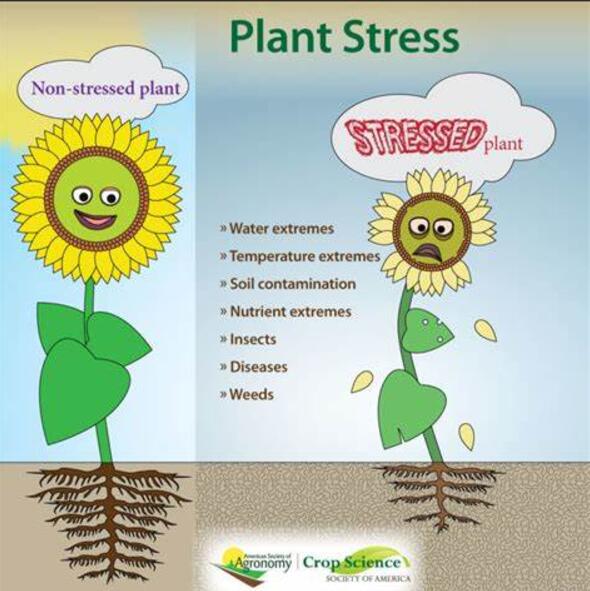Rhizobacteria mitigate salinity stress in maize by modulating photosynthesis, antioxidant defense, and rhizosphere microbial diversity
IF 6.8
Q1 PLANT SCIENCES
引用次数: 0
Abstract
Soil salinization poses challenges to agricultural growth; nonetheless, plant growth-promoting rhizobacteria (PGPR) can enhance the potential of plants to withstand salt stress. However, further investigation is needed to understand the specific mechanisms through which PGPR influence rhizosphere microbial diversity and root exudates in improving maize (Zea mays) salt tolerance under field conditions. This study utilized four treatments under field conditions: normal soil (NN), normal soil with PGPR (NP), salt-stressed soil (SN), and salt-stressed soil with PGPR (SP) to explore the influence of PGPR on maize rhizosphere microbial diversity and root exudates. The results showed that salt stress reduced maize's net photosynthetic rate (Pn), leaf area index (LAI), leaf K+ concentration, and yield while increasing Na+ concentration and Na+/K+ ratio. PGPR alleviated these effects, improving Pn, K+ levels, and yield while reducing Na+ and Na+/K+ ratios. Under salinity, Pn, stomatal conductance, transpiration rate, LAI, and chlorophyll content dropped by 52.71 %, 37.14 %, 29.53 %, 14.66 %, and 60.20 %, respectively, but PGPR increased them by 60.75 %, 37.14 %, 69.60 %, 13.20 %, and 27.17 %. Salt stress disrupted carbohydrate metabolism and antioxidant enzyme activities, reducing sucrose synthase and ADP-glucose pyrophosphorylase activities. PGPR restored these and boosted antioxidant defenses. PGPR minimized Na+ uptake, improved ion balance, and mitigated yield losses, achieving a maximum yield of 21,852.43 kg ha-1 (NP treatment) versus 15,859.95 kg ha-1 under SN. Additionally, SN decreased bacterial Shannon and Chao1 indices, whereas PGPR resulted in higher indices than SN. The SN treatment enriched salt-tolerant and pathogenic microorganisms (e.g., Rhodanobacter, Alternaria, Tausonia), while PGPR-enriched beneficial microorganisms that mitigate salt stress effects (e.g., Streptomyces, Sphingomonas, MND1). Additionally, root exudates from PGPR were enriched with metabolites classified as benzenoids, which positively correlated with Streptomyces and Sphingomonas. The study shows that adding PGPR reduces Na+ absorption in maize roots, lowers leaf Na+/K+ ratios, and mitigates yield loss under salt stress. Further research is needed to apply these findings in agriculture and evaluate their long-term impacts on soil quality and crop yields.
求助全文
约1分钟内获得全文
求助全文
来源期刊

Plant Stress
PLANT SCIENCES-
CiteScore
5.20
自引率
8.00%
发文量
76
审稿时长
63 days
期刊介绍:
The journal Plant Stress deals with plant (or other photoautotrophs, such as algae, cyanobacteria and lichens) responses to abiotic and biotic stress factors that can result in limited growth and productivity. Such responses can be analyzed and described at a physiological, biochemical and molecular level. Experimental approaches/technologies aiming to improve growth and productivity with a potential for downstream validation under stress conditions will also be considered. Both fundamental and applied research manuscripts are welcome, provided that clear mechanistic hypotheses are made and descriptive approaches are avoided. In addition, high-quality review articles will also be considered, provided they follow a critical approach and stimulate thought for future research avenues.
Plant Stress welcomes high-quality manuscripts related (but not limited) to interactions between plants and:
Lack of water (drought) and excess (flooding),
Salinity stress,
Elevated temperature and/or low temperature (chilling and freezing),
Hypoxia and/or anoxia,
Mineral nutrient excess and/or deficiency,
Heavy metals and/or metalloids,
Plant priming (chemical, biological, physiological, nanomaterial, biostimulant) approaches for improved stress protection,
Viral, phytoplasma, bacterial and fungal plant-pathogen interactions.
The journal welcomes basic and applied research articles, as well as review articles and short communications. All submitted manuscripts will be subject to a thorough peer-reviewing process.
 求助内容:
求助内容: 应助结果提醒方式:
应助结果提醒方式:


